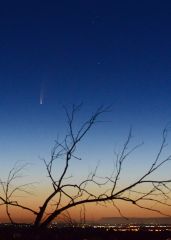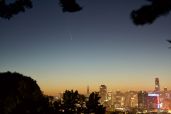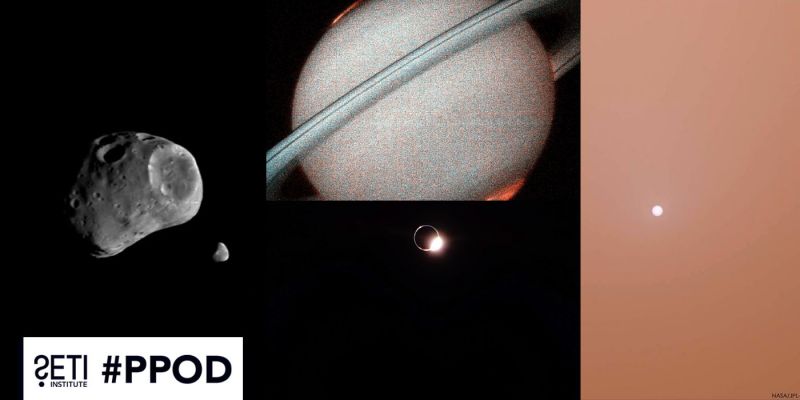Have you ever seen a comet in the flesh? If you live in the northern hemisphere, you can cross that experience off your bucket list before bedtime tonight.
The NEOWISE comet takes its name from the instrument that found it, the repurposed Wide-field Infrared Survey Explorer (WISE) telescope. Launched in 2009, WISE’s mission was to map the sky in infrared wavelengths. But after its coolant dissipated, the telescope gaze was turned on a different sort of prey: small objects in our solar system. So far, this orbiting instrument has bagged nearly three hundred nearby asteroids and 28 comets. One of the latter, NEOWISE, has been adorning the pre-dawn sky for weeks. But as of today it’s emerging in the early evening. It awaits your inspection.
Here’s what you have to do: Grab a pair of binoculars and go out into the evening twilight, about an hour after sunset. While the sky becomes darker, look towards the north-northwest and scan just above the horizon. In the coming days, the comet will gradually climb higher, but also become fainter as it pulls away from the Sun.
Once you’ve spotted NEOWISE, you’ll be able to pick it out with the naked eye. Obviously, a dark sky is a plus, particularly if you want to see the tail. You might wish to consider a quick road trip to a rural area if you live in an urban or suburban conurbation.
The comet will get no closer than 64 million miles to Earth (on July 22), so no need to dig a bomb shelter. SETI Institute astronomer Peter Jenniskens also advises that there will be no meteor shower associated with this object.
Seeing a comet in the sky used to be taken as an omen (see: King Harold and the Battle of Hastings.) NEOWISE may not be an omen, but is an opportunity. Sure, you could bide your time until Halley’s comet returns, but that will be in 2061. Waiting will be a drag.
More observing details published by Sky & Telescope can be found at https://skyandtelescope.org/press-releases/new-bright-visitor-comet-neowise/







